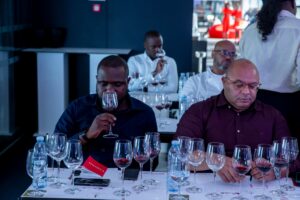
From the work in the vineyard to that in the winery, to customs and traditions at the table, passing through trade and exchanges: a journey “narrated” by 180 objects, including wine machines and work tools in addition to a personal book shop with volumes, magazines, guides and vintage photographs. One can find anything, from the many types of pruning shears to wine section with pumps, from those of the end of the XIX century, those balance pumps operated by two people, to those which are part of the mechanic evolution of the first years of XX century. And, still, filters, wine presses, presses, balances, sparkling machines, a very first bottler, a historical label machine, a wine laboratory with over 30 objects between balances, cruets, microscopes, refrigerant column, tasting glass, and other things collected in various wine analysis laboratories, and which date back to the end of XIX century. Thermometers, precision balance, microscope, pipettes, graduated cylinders, and, dating back to XVIII century, two wood filters, and cotton bags which were used to make wine pass: curiosity and stimuli to visit “Wine machines” by Carpineto didn’t miss, the first private company museum to enter Foundation Musei Senesi, one of the most important cultural institutions in museum panorama of the territory, reuniting over 50 museums dedicated to art, archaeology, science, tradition, and not only and new “little jewel” lighting in the property at the boundary with the earth of Vino Nobile di Montepulciano and Chianciano Terme, historical locality of Italian thermal tourism.
An idea arisen by Antonio Mario Zaccheo, who, with Giovanni Carlo Sacchet, in 1967, founded Tuscan company, one of the most important ones, which, today, owns five properties widespread in the most important territories of Tuscan wine, and, therefore, in Chianti Classico, in Montalcino, in Maremma, in Valdarno, in addition to Montepulciano (overall, they are 569 ground hectares cultivated with vineyard for 220 hectares, and an average production of 3.5 million of bottles per year) for a reality which earned a place in Registro dei Marchi Storici di interesse nazionale – Register of Historical Brands of national interest.
Entrepreneur Antonio Mario Zaccheo collected here conserved, sought, and collected evidence in the years, symbol of an entire life dedicated to agriculture and wine, particularly: “I had the privilege to be born in a unique historical period, of social and economic growth, of widespread wellness, and paired with an important technical evolution – explained Antonio Mario Zaccheo – and, I began in Puglia, then, life brought me elsewhere, up to Tuscany in the Sixties of XX century. I have always been convinced that these objects would have been useful for something, material evolution can be seen, we found the right space. Work wasn’t easy, each machine was cleaned, and cleaned up with care”.
To WineNews, Zaccheo added that “the idea arises from the fact that, all throughout my life, I collected these pieces which, otherwise, would have been demolished, and I found a destination for them. Luckily, the possibility to do that arose, and I realized that these pieces weren’t only mechanical, but they had a story to be narrated. And, Carpineto was the ideal place to have the possibility to do that: in the museum, there is history, evolution of machines from the winery starting from the end of XIX century to the Nineties of XX century”. Caterina Sacchet explained to WineNews that “this museum is to narrate a history about how companies evolve, but also how machines, and manual work evolved until now: it is something precious to be considered, to continue to be narrated and explained also for future enologists, and generations, to make people understand how people worked before, and how people do that now. Today, wine narration is very important, there are exposed pieces that enologist used to implement forty years ago, but, that, in specific occasions, find actualization also now because we own technology and advancing but machines like these that are based on physics and mechanics will never be replaced by anyone”.
Alessandro Ricceri, president of Foundation Musei Senesi, one of the most important cultural institution in the museum panorama of the territory, reuniting over 50 museums dedicated to art, archaeology, science, tradition explained that “it was a beautiful occasion for us: out of 51 adhering museums, it is the first Business Museum which is part of the Foundation, and has also the meaning to narrate wine, of how it was done, and how it is done today”.
Copyright © 2000/2025
Contatti: info@winenews.it
Seguici anche su Twitter: @WineNewsIt
Seguici anche su Facebook: @winenewsit
Questo articolo è tratto dall'archivio di WineNews - Tutti i diritti riservati - Copyright © 2000/2025